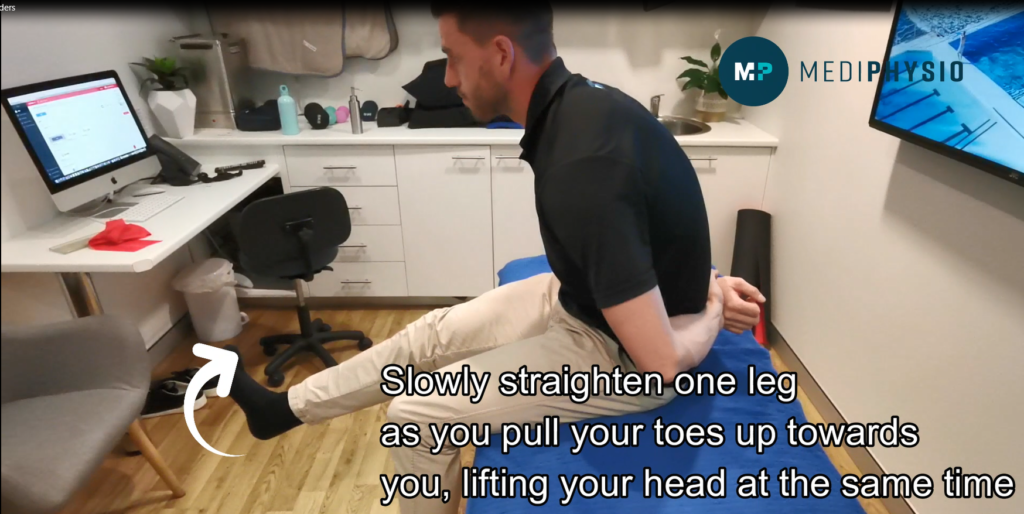POSTERIOR BUTTOCK PAIN

Getting to the ‘bottom’ of buttock pain can sometimes prove a diagnostic dilemma, due to the number of potential local sources of nociception and relative complexity in anatomical relationships within the posterior hip region. This is compounded by pelvic structures and more remote sources within the lumbar spine. Perhaps this conundrum sometimes leads health and exercise professionals to oversimplify buttock pain and the associated impairments.
The most common things that patients are told when attending for treatment of buttock pain:
- It’s related to your sacro-iliac joint (SIJ) – your pelvis is out of place
- Your glutes are overactive/underactive
- You have piriformis syndrome (a label often used for any pain in the mid-buttock region).
Common causes of Posterior Buttock Pain:
LUMBER RELATED BUTTOCK PAIN
- the buttock pain is associated with back pain and their behaviour is linked
- pain extends below the knee
- there is accompanying leg and/or foot tingling or numbness
- there are bilateral symptoms
- aggravating factors are related to lumbar loading – leaning/bending (e.g. vacuuming), lifting, repeated/end range lumbar motion, particularly if both back and buttock pain are exacerbated
KEY IDENTIFIERS OF SACROILIAC JOINT RELATED BUTTOCK PAIN
- the primary area of pain is in the Fortin’s area, near the PSIS
- aggravating factors specifically recreate pain in the Fortin’s area around the PSIS (rather than pain in the mid-buttock region)
- the patient is female/perinatal/hypermobile or has a history of pelvic trauma
- Note: consider Ankylosing Spondylitis for males in 20-40 year old age group presenting with SIJ region pain
KEY IDENTIFIERS OF HIP JOINT RELATED BUTTOCK PAIN
- the pain is in the mid-buttock region at the posterior aspect of the joint
- there is associated anterior hip/groin or knee pain (not explained by a local knee condition)
- there is accompanying range restriction – difficulty reaching the foot/manipulating shoes and socks
- mid buttock and anterior hip pain are provoked by deep hip flexion and/or repeated hip extension (e.g. walking fast or on a treadmill).
KEY IDENTIFIERS OF SOFT TISSUE RELATED BUTTOCK PAIN
- the pain is localised to a muscle or tendon
- the pain is aggravated by activity or specific loading of the tissue beyond its level of load tolerance
- the pain eases with rest and light activity, below load tolerance level
- there is an identifiable history of overload – acute, fatigue or insufficiency
Early Management & Rehabilitation
Soft tissue related buttock pain can be further subdivided into a number of categories which represent the different muscles which can cause sensitivity in the buttock.
- Piriformis syndrome is arguably the best known and most contentious syndrome of the buttock. Inmost cases, this diagnosis is used when some form of sciatic nerve entrapment
- Deep gluteal syndrome is a relatively more recent term used to describe ‘the presence of pain in the buttock caused from non-discogenic and extrapelvic entrapment of the sciatic nerve’ (Martin et al 2015).
- Ischial tunnel syndrome, sometimes also referred to as hamstring syndrome, refers to sciatic nerve entrapment or irritation in the ischial tunnel, between the ischium and the femur (Martin et al 2016).
- Gemelli – obturator internus syndrome refers to symptoms associated with sciatic nerve entrapment at the level of the conjoined gemelli- obturator internus musculotendinous complex at the posterior aspect of the hip joint.
Early intervention

For the purpose of today’s blog, we are going to focus on the management of deep gluteal syndrome, otherwise commonly known as piriformis syndrome.
- Medication: Anti-inflammatory painkillers (such as aspirin or ibuprofen), NSAID
- Heat or cold: Applying heat packs or ice packs. Avoid excessive heat or applying ice directly to the skin, as these can burn.
- Education: Educate the patient to reduce sitting time and advise on using a soft cushion when sitting on hard surfaces. Male patients should avoid putting their wallet in their back pocket.
- Exercise: Sciatic flossing and neurodynamic exercises should be used to treat local hypertonicty.
- Manual therapy: Patients may benefit from soft tissue massage to help allevaite local hypertonicity.
- Steroid injections: These are only advised if there is inflammation associated with the specific medical condition, as they can have adverse effects.
CHECK OUT OUR VIDEO BELOW ON LUMBAR NERVE FLOSSING
References:
- https://www.medicalnewstoday.com/articles/176443#prevention
- https://www.ncbi.nlm.nih.gov/pmc/articles/PMC2016244/


Sorry, comments are closed for this post.